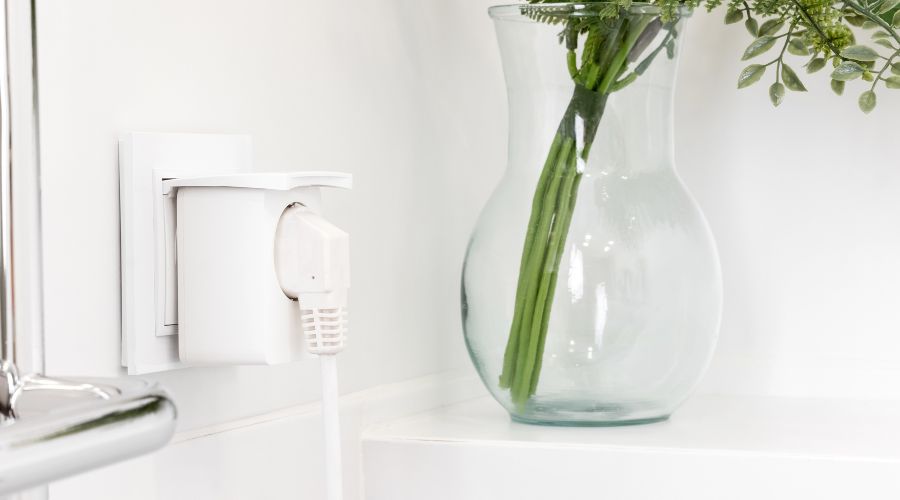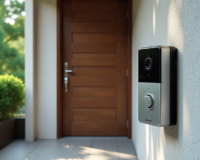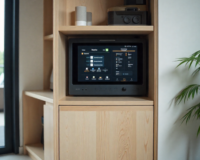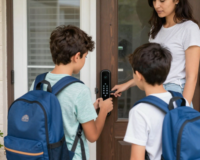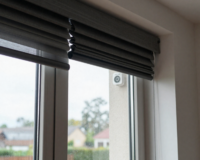Smart plugs stand out as simple yet remarkably effective tools. Insert a compact adapter into your traditional electrical outlets, offering enhanced control over your home and streamlining everyday tasks for improved efficiency.
To grasp the essence of a smart plug, envision it as a switch akin to a wall switch but with the added advantage of portability. This device allows you to wield that switch remotely, provided you have a smartphone or tablet within reach.
This article explores smart plugs, unraveling their functionalities, applications, and ways to harness their potential.
Read more: 5 Smart Home Gadgets to Help You Save Money
What Is a Smart Plug?
Smart plugs, also known as smart outlets or Wi-Fi plugs, are devices designed to make any regular electrical appliance or device “smart” by enabling remote control and automation via a smartphone or a smart home assistant. These plugs often resemble standard electrical plugs and are equipped with Wi-Fi connectivity, allowing them to connect to your home network.
What are the Benefits of Using a Smart Plug?
Remote Accessibility
The primary function of a smart plug revolves around remote control. Whether at home or away, users can effortlessly manage their devices, turning them on or off via a smartphone or tablet. This feature ensures convenience and peace of mind, eliminating worries about accidentally leaving devices running.
Scheduling and Automation
Smart plugs empower users to create schedules for their devices, automating routines based on individual preferences. Setting specific times for devices to activate or deactivate enhances efficiency and energy conservation, aligning with daily routines and optimizing power consumption.
Energy Monitoring
Many smart plugs come equipped with energy monitoring capabilities, offering insights into the power consumption of connected devices. This feature enables users to track energy usage, identify power-intensive appliances, and make informed decisions to minimize wastage, thereby reducing utility bills.
Voice-Controlled Operations
Integration with popular smart home ecosystems allows for voice-controlled functionality. By connecting smart plugs to voice assistants like Amazon Alexa or Google Assistant, users can command their devices through simple voice prompts, further streamlining control and accessibility.
How Smart Plug Work?
A smart plug is essentially a regular outlet with a brain, making it the gateway to turning any plugged-in device into a “smart” one. Here’s how it works:
Hardware:
- Plug and outlet: The smart plug plugs into a standard wall outlet and has its own outlet where you plug your appliance.
- Wi-Fi or Hub connection: Most smart plugs connect directly to your Wi-Fi network, while some might require a separate hub as an intermediary.
- Microprocessor and radio: These brains of the plug handle communication, control the power flow, and run any built-in features.
Functionality:
- Connect and set up: Download the manufacturer’s app and follow the instructions to connect the plug to your Wi-Fi network or hub.
- Control power: Turn your plugged-in device on or off remotely through the app, even when you’re not home.
- Schedule and automate: Set schedules for the plug to automatically turn on/off your device at specific times or based on conditions like sunrise/sunset, weather, or other smart home devices.
- Voice control (optional): Integrate the plug with your smart speaker (e.g., Amazon Alexa, Google Home) and control it with voice commands.
- Monitoring (optional): Some smart plugs can track energy usage of the connected device, giving you insights into your power consumption.
Where to Use Smart Plugs
An array of smart devices like smart lamps, blinds, lightbulbs, and more offer remote control capabilities. However, the unique advantage of smart plugs lies in their ability to grant wireless remote control to regular appliances, including:
- Slow Cooker: A smart plug offers control over cooking duration for enthusiasts of set-and-forget meals using a slow cooker. This convenience allows adjustment from anywhere, preventing the risk of overcooking dishes when unexpected delays occur.
- Holiday Lights or Christmas Tree: Utilize smart plugs to manage energy usage by scheduling the activation and deactivation of holiday lights. Set specific times to illuminate, ensuring they only operate when someone is present to enjoy the festive display.
- Coffee Maker: Embrace the aroma of freshly brewed coffee in the morning by scheduling your coffee maker with a smart plug. Start brewing before waking up or activate it remotely via the app for a seamless morning routine.
- Air Conditioners and Space Heaters: Optimize home temperature control by scheduling small space heaters or window air conditioners using smart plugs. Ensure a cozy environment by activating these devices just before arriving home.
- Outdoor Smart Plug: Extend smart plug functionality to the outdoors with options like the iHome™ Outdoor Smart Plug. Manage devices remotely, such as decorative patio lights or water fountain pumps, enhancing convenience and control over exterior settings.
Smart plugs offer versatile solutions not only for interior appliance automation but also for managing outdoor devices. By incorporating them into various aspects of your routine, these plugs provide efficient control and energy management throughout your home.
Types of Smart Plugs
Smart plugs come in different forms and configurations, each tailored to suit specific needs and preferences. Here are various types of smart plugs available in the market:
- Single Smart Plugs: These compact adapters resemble cubes or circular devices that fit into standard 120V electrical outlets. Usually affordable, ranging from $15 to $20 per plug, they allow individual control over connected devices.
- Smart Power Strips: Featuring multiple outlets (usually three to six), smart power strips enable control over each outlet separately or collectively. Ideal for clustered devices in entertainment setups or scenarios requiring simultaneous control, like holiday lighting.
- Smart Wall Outlets: Integrated directly into the wall, these outlets incorporate smart plug technology, offering a streamlined appearance. Installation often necessitates the expertise of a qualified electrician or a skilled DIYer.
- Outdoor Smart Plugs: Designed to withstand varying weather conditions, these outdoor versions function similarly to indoor plugs but are weatherproof. Suitable for managing landscape lighting, pond pumps, security systems, and other exterior devices, they typically carry water resistance ratings (e.g., IPX4) for outdoor use.
- Specialized Control Hubs: Some smart plugs require specialized hubs to establish wireless connections. These hubs act as intermediaries linking the plugs to the home router, offering extended functionalities and network control.
Each type of smart plug caters to specific usage scenarios, providing users with options to best suit their home automation needs, whether for indoor appliance management, outdoor device control, or streamlined power regulation.
How to Utilize Smart Plugs
Step 1: Selection Process
Choose a smart plug compatible with your home network and the devices you intend to control. Ensure compatibility with your preferred smart home system for seamless integration.
Step 2: Installation
Plug the smart device into a standard electrical outlet and follow the manufacturer’s instructions to establish connectivity with your home Wi-Fi network. This typically involves downloading a dedicated app and creating a user account.
Step 3: Device Connection
Connect desired devices to the smart plug and pair them using the accompanying app. Test the connection to ensure proper functionality and control.
Step 4: Exploring Features
Familiarize yourself with the app interface and explore the available features such as scheduling, energy monitoring, and automation options.
Step 5: Creating Schedules and Automations
Set up schedules and automation routines tailored to your preferences and daily routines. Experiment with different configurations to optimize energy consumption and convenience.
Step 6: Integration with Voice Control (Optional)
If desired, integrate the smart plug with compatible voice assistants for hands-free operation via voice commands.
Conclusion
Smart plugs epitomize the fusion of technology with everyday living, offering a gateway to home automation and efficiency. These unobtrusive devices have the potential to significantly enhance convenience, energy management, and home security. Whether you seek to streamline tasks, minimize energy wastage, or simply embrace the convenience of remote control, smart plugs represent an accessible and versatile solution.
As technology continues to shape our homes, smart plugs serve as fundamental components, enabling users to take charge of their electrical devices with unparalleled ease. Investing in smart plugs not only transforms traditional appliances into smart devices but also paves the way for a more connected and efficient living environment.

